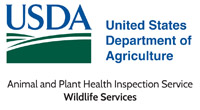U.S. Department of Agriculture: Animal and Plant Health Inspection Service
Document Type
Article
Date of this Version
Fall 2019
Citation
U.S. Government Work
Abstract
Rodents cause substantial damage and losses of foodstuffs around the world. They also transmit many diseases to humans and livestock. While various methods are used to reduce damage caused by rodents, rodenticides remain an important tool in the toolbox. However, like all tools, rodenticides have advantages and disadvantages. Several considerations are shaping the future of rodenticide use, including manufacturing and registration costs, concern about toxicity levels and nontarget animal hazards, potential hazards to children, reduced effectiveness of some formulations, and humaneness to the targeted rodents. Many of these disadvantages apply to anticoagulant rodenticides, and their use is being more restricted in numerous settings. This paper discusses rodenticide use but also alternative control methods such as traps, exclusion, habitat management, repellents, and fertility control. While there have been relatively few new developments in rodenticides and other rodent control methods in the last several decades, new formulations and active ingredients are being investigated so that these concerns can be addressed. Some of these new developments and research results are also discussed.
Included in
Natural Resources and Conservation Commons, Natural Resources Management and Policy Commons, Other Environmental Sciences Commons, Other Veterinary Medicine Commons, Population Biology Commons, Terrestrial and Aquatic Ecology Commons, Veterinary Infectious Diseases Commons, Veterinary Microbiology and Immunobiology Commons, Veterinary Preventive Medicine, Epidemiology, and Public Health Commons, Zoology Commons


Comments
Human–Wildlife Interactions 13(2):186–199, Fall 2019 • digitalcommons.usu.edu/hwi